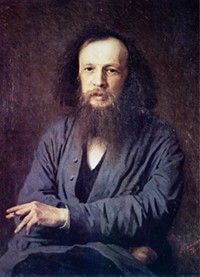Advertisement
Grab your lab coat. Let's get started
Welcome!
Welcome!
Create an account below to get 6 C&EN articles per month, receive newsletters and more - all free.
It seems this is your first time logging in online. Please enter the following information to continue.
As an ACS member you automatically get access to this site. All we need is few more details to create your reading experience.
Not you? Sign in with a different account.
Not you? Sign in with a different account.
ERROR 1
ERROR 1
ERROR 2
ERROR 2
ERROR 2
ERROR 2
ERROR 2
Password and Confirm password must match.
If you have an ACS member number, please enter it here so we can link this account to your membership. (optional)
ERROR 2
ACS values your privacy. By submitting your information, you are gaining access to C&EN and subscribing to our weekly newsletter. We use the information you provide to make your reading experience better, and we will never sell your data to third party members.
Biological Chemistry
There’s More To The Story
July 27, 2015
| A version of this story appeared in
Volume 93, Issue 30
The Newscripts of May 11 (page 48) noting the auction of the 1927 Nobel Prize in Chemistry medal for $395,000 failed to mention the most interesting fact regarding that award. Heinrich O. Wieland and Adolf O. R. Windaus had the structural connectivity of cholesterol wrong. In 1932, J. D. Bernal published the lattice constants and space groups of six steroids related to vitamin D, which showed that the structural formula for the four-fused-rings system proposed by Wieland and Windaus could not be correct (Nature 1932, DOI: 10.1038/129277a0).
On the basis of Bernal’s work, Wieland and Elisabeth Dane (1932) came up with the correct structure, which was finally confirmed when the X-ray structure of cholesteryl iodide was published by Harry Carlisle and Dorothy Crowfoot (later Hodgkin) in 1945. In a classic paper, Bernal, Crowfoot, and I. Fankuchen (Philos. Trans. A 1940, DOI: 10.1098/rsta.1940.0010) described the crystallography and crystal chemistry of 80 steroids. They reported the cell constants, space groups, optical properties, and crystal morphology of these steroids, as well as analysis of the length, width, and thickness, and relative orientation of the molecular axes to the crystallographic axes.
It is hard to believe that before the availability of digital computers, cholesterol, an asymmetric structure of 28 light atoms—C, O, plus attached hydrogens—was impossible to solve without a heavy atom. Dorothy Crowfoot Hodgkin went on to win the Nobel Prize in Chemistry in 1964 “for her determinations by X-ray techniques of the structures of important biochemical substances,” principally penicillin and vitamin B-12, and much later the structure of insulin.
Jane F. Griffin
Buffalo



Join the conversation
Contact the reporter
Submit a Letter to the Editor for publication
Engage with us on Twitter